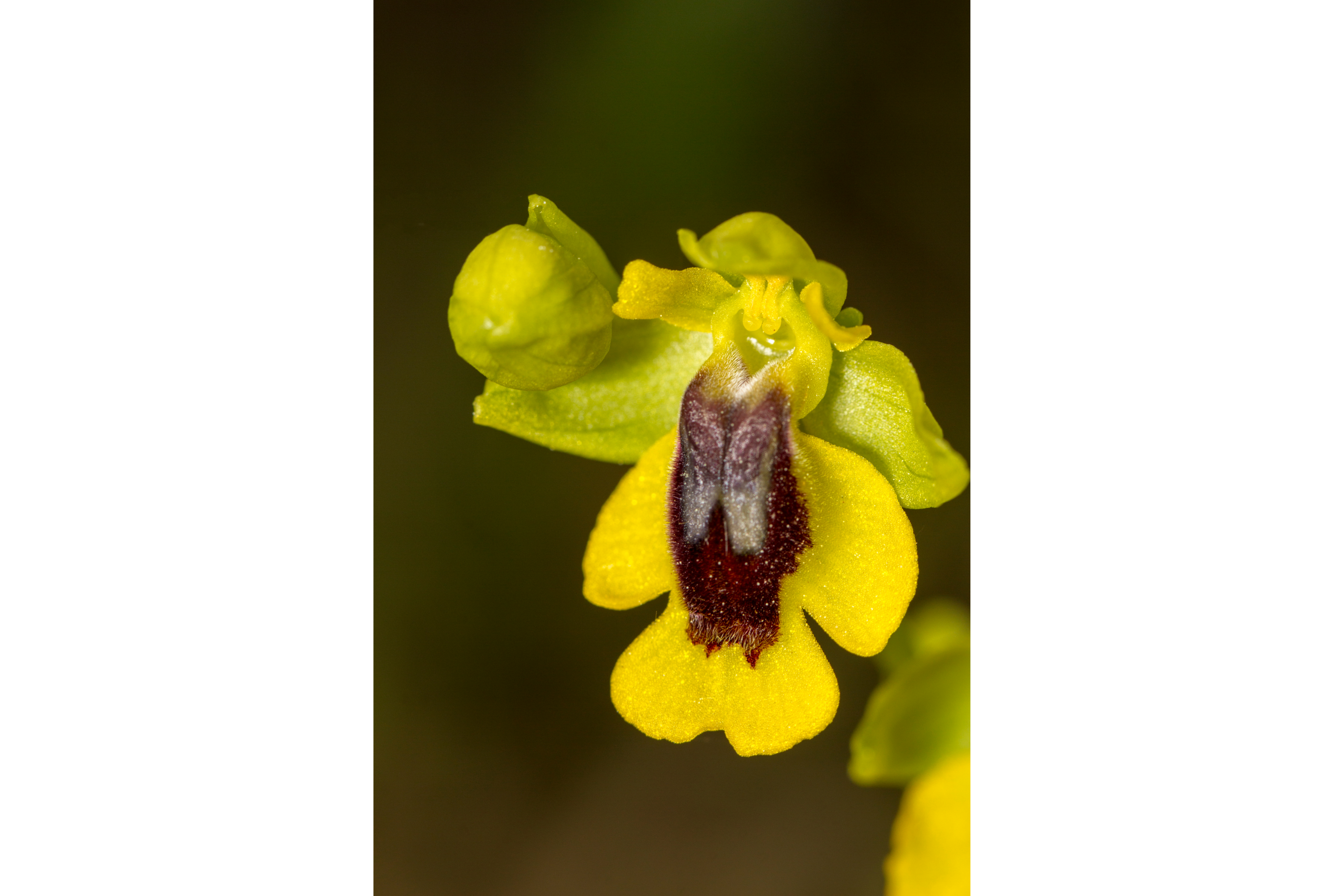Yellow bee-orchid
(Ophrys lutea)

Description
Ophrys lutea, the yellow bee-orchid, is a species of orchid native to southern Europe, North Africa, and the Middle East, the range extending from Portugal and Morocco to Syria. Broad asymmetric lateral sepals, dorsal sepal lowered. Extended petals, yellow or with a blue-grey or brown spotted velvety macula. Pollinated by male Andrena bees. This species is notable among Ophrys for the fact that the pollinating bees sit on the labellum facing away from the pollinaria instead of facing towards them, and thus collect the pollinaria with their abdomen. Numerous subspecific names have been proposed, but as of May 2014 the following are accepted: Ophrys lutea subsp. aspea (Devillers-Tersch. & Devillers) Faurh. - Tunisia, Libya Ophrys lutea subsp. galilaea (H.Fleischm. & Bornm.) Soó - from Portugal and Morocco to Syria Ophrys lutea subsp. lutea - from Portugal and Morocco to Turkey Ophrys lutea subsp. melena Renz - Greece, Albania Ophrys lutea subsp. sicula (Tineo 1817) - Italy The genus Ophrys is a large group of orchids from the alliance Orchis in the subtribe Orchidinae. They are widespread across much of Europe, North Africa, Caucasus, the Canary Islands, and the Middle East as far east as Turkmenistan. These plants are remarkable in that they successfully reproduce through pseudocopulation, that is, their flowers mimic female insects to such a degree that amorous males are fooled into mating with the flowers, thereby pollinating them. There are many natural hybrids. They are referred to as the "bee orchids" due to the flowers of some species resemblance to the furry bodies of bees and other insects. Their scientific name Ophrys is the Greek word for "eyebrow", referring to the furry edges of the lips of several species. Ophrys was first mentioned in the book "Natural History" by Pliny the Elder (23-79 AD). They are terrestrial or ground orchids from central to South Europe, North Africa, Asia Minor, up to the Caucasus Mountains, but mostly in the Mediterranean region. They have been said to be the most important group of European terrestrial orchids. During summer, all Ophrys orchids are dormant as underground bulbous tubers, which serve as a food reserve. In late summer/autumn they develop a rosette of leaves. Also a new tuber starts to grow and matures until the following spring; the old tuber slowly dies. The next spring the flowering stem starts to grow. During flowering the leaves have already started to wither.
Taxonomic tree:







